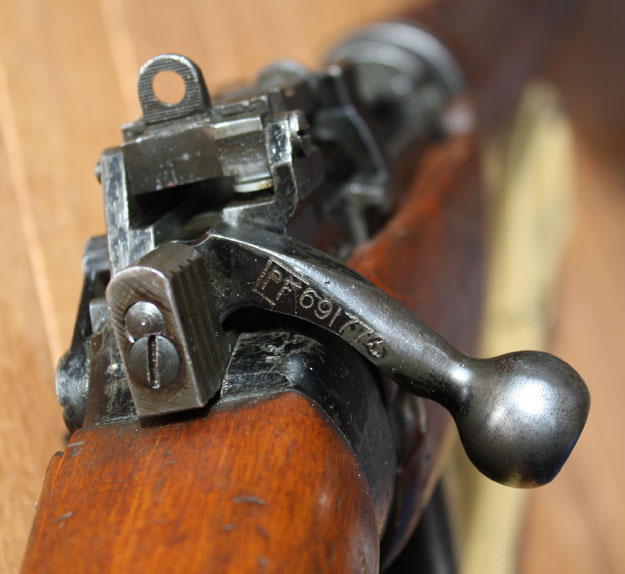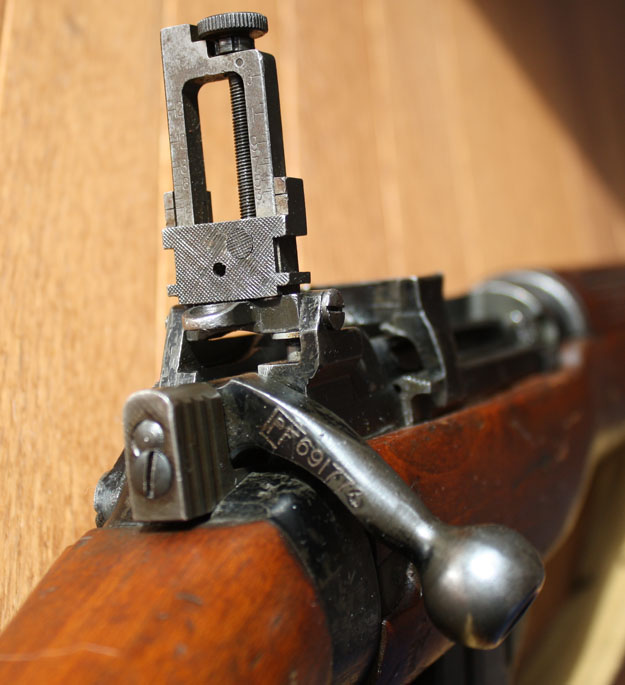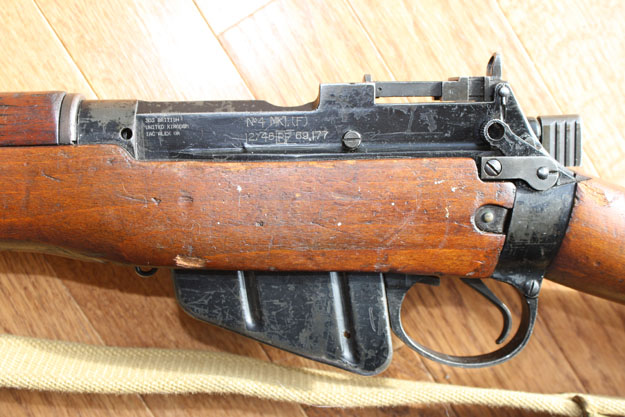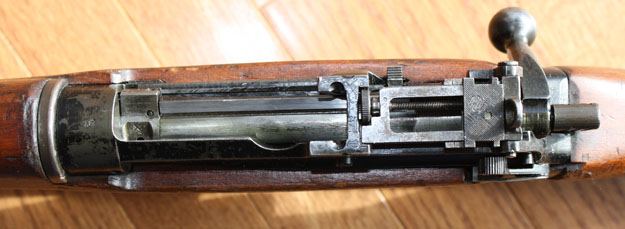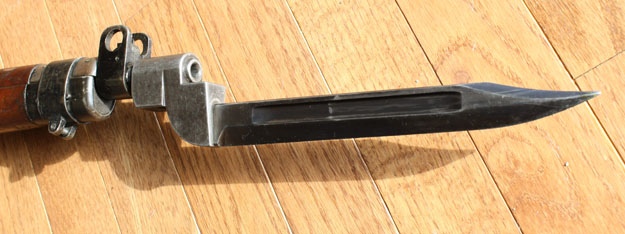Interrupted by WW1, the search for a new British Service rifle was resumed. The desires for a smaller diameter bullet, preferably in .276 caliber were rejected when it it was realized the bullet wasn't big enough to make adequate tracers or armor piercing types. The self loading rifle was considered but dropped again at this time. What was finally settled on was a heavier barrel, improvements in the bolt, a redesign of the forend for a smaller bayonet and aperture sights.
Photo comparison of No. 1 Mk. III and No. 4 Mk. I

Several things were desired, but the tried and true won out. There was already such a heavy investment in the SMLE, and money dried up after the war, leading to improvements in the existing design. These had already been under way in the SMLE Mk V and Mk VI, where a Mk III had aperture sights and a heavier barrel installed. The Mk V was never made in any numbers, but the Mk VI was the rifle that morphed into the No 4 rifle. The barrel was half a pound heavier than the No III, and this was acceptable for sniper use also. This was essentially a Long Lee Enfield barrel cut down, which was a practice already in use by shooting clubs to make their SMLE's shoot better on targets. Improved metals were called for, as it was noticed in the Great War that German Mausers didn't rust as bad as British guns did. The threads changed, primarily the barrel threads, and these were standard British thread patterns now, as opposed to the proprietary threads used at Enfield Lock on earlier SMLE's. This ended any interchangibility of parts between the old and new rifles.
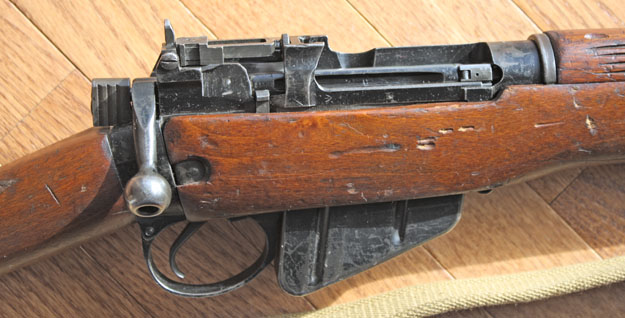
The bolt was substantially redesigned. The striker was now a 2 piece affair and the bolt head was made smaller for smoother movement, and easier dissassembly. The bolt handle was hollowed out to reduce weight. The receiver was modified to accept an aperture sight which had a large aperture battle sight when folded down, and a small target sight when folded up. The nose of the rifle had the wood removed for the last 3 inches of the barrel with a lighter nose cap. The muzzle was ground down flat to accept rifle grenades, and used the old 1907 bayonet for a short time but was eventually to use a new design shorter bayonet. The new spike bayonet was a radical departure from standard bayonet design, but it was found that the old bayonet really wasn't that useful. It was ok to poke someone, but not much use in clearing brush, or for use as a trench knife, as soldiers used a variety of smaller knives for the purpose but not their bayonets. Much work went into reducing the barrel's vibrations with the bayonet installed, but not much came of it. The bayonet installed would influence the bullet's path, and that was that.
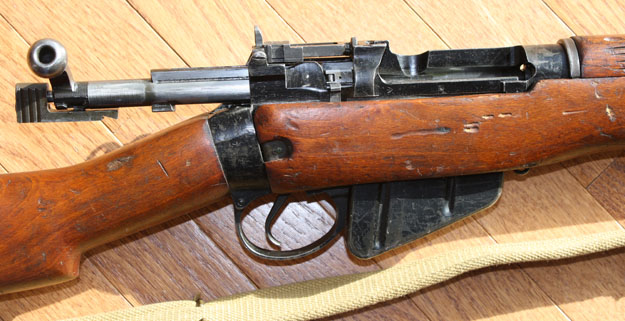
In 1926, the nomenclature for British rifles changed. The old Short Magazine Lee Enfield Mk. III now became the Rifle No I Mk III, and the Mk VI eventually became the Rifle No 4, Mk I. By 1930 the rifle was ready to go, and went into production in 1939. Soon after, it went into production in Canada and the US. The Canadian rifles were known as the Rifle No 4 Mk I* and were made at Long Branch. They were marked as such, and a million were made, along with a thousand sniper rifles. The US guns were made by Savage with some at the Stevens plants also. These had 6 groove rifling and were marked US property. The British wartime rifles weren't made at Enfield any longer, as their production was turned over to the new Bren machine gun. However 3 new plants were set up, Maltby in Yorkshire, Fazakerley in Lancanshire, and Shirley in Birmingham.
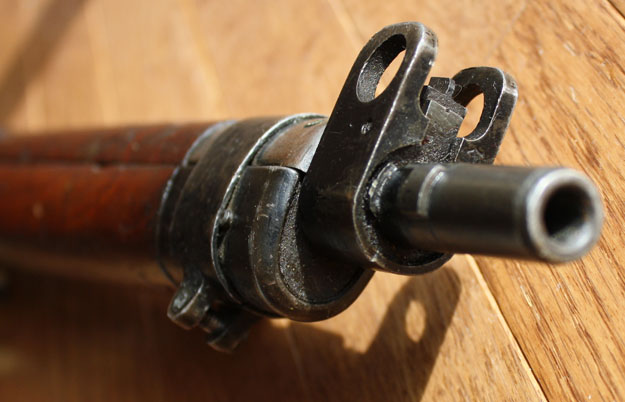
The rifle suffered from wartime modifications. The sights were way to complicated to produce quickly and were modified immediately into a dual aperture that really didn't work out, eventually a modified sight was agreed to that wasn't too terrible. Other parts were simplified, stamped out when possible, or welded together. Many of these rifles had to be intercepted by Enfield and modified again to be good enough for issue. The standard of Lee Enfield rifles dropped to it's lowest point ever in WW2, but all in all, it was still a great rifle, although getting a little tatty. Wood for stocks, machine tools and skilled workers were drying up. Several new barrels were tried, thousands were made with 2 grooves instead of 5, and some with the threads shrunk and pinned on, but not many of these were a success. After the war, the rifle was essentially built again as it was in 1939.
